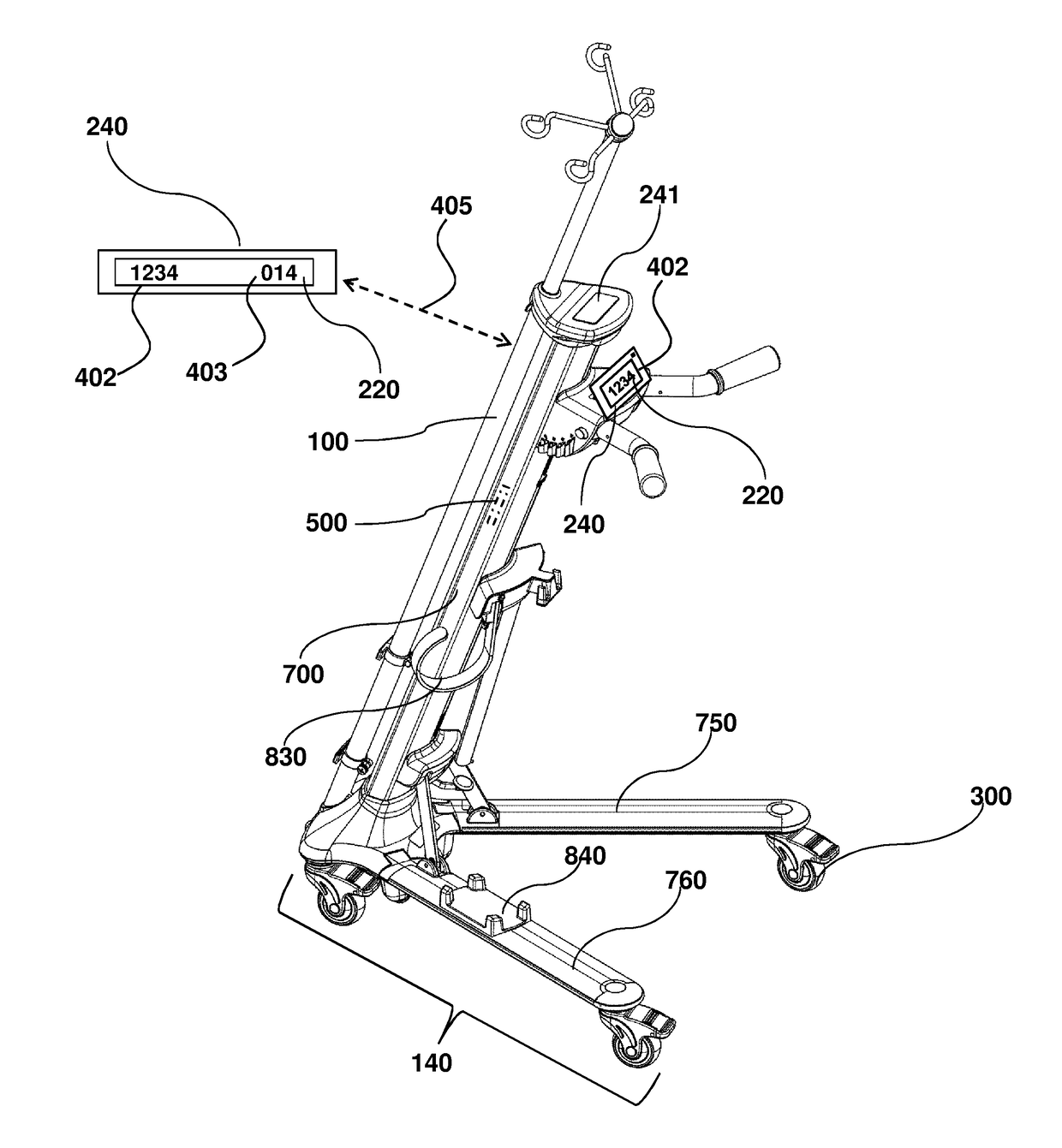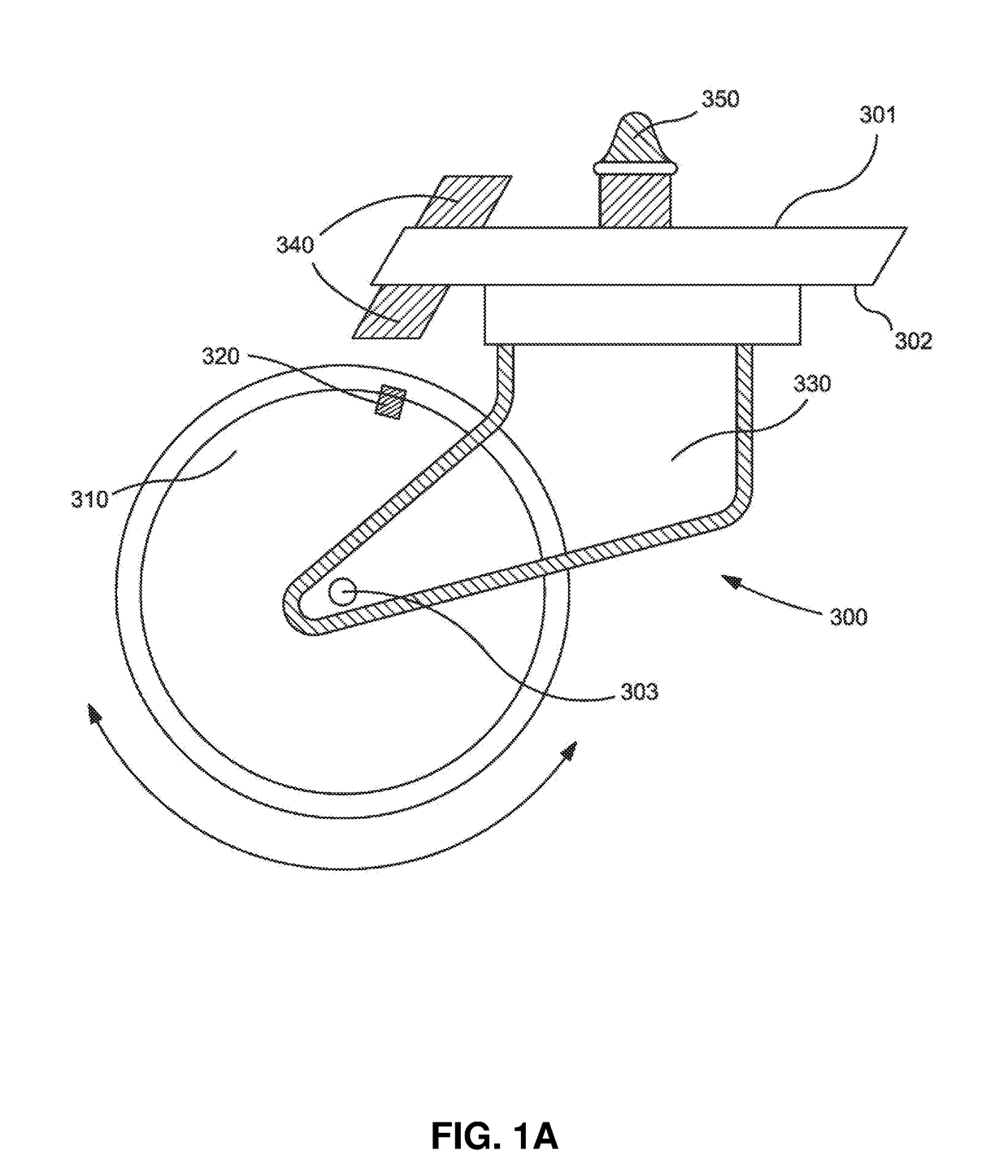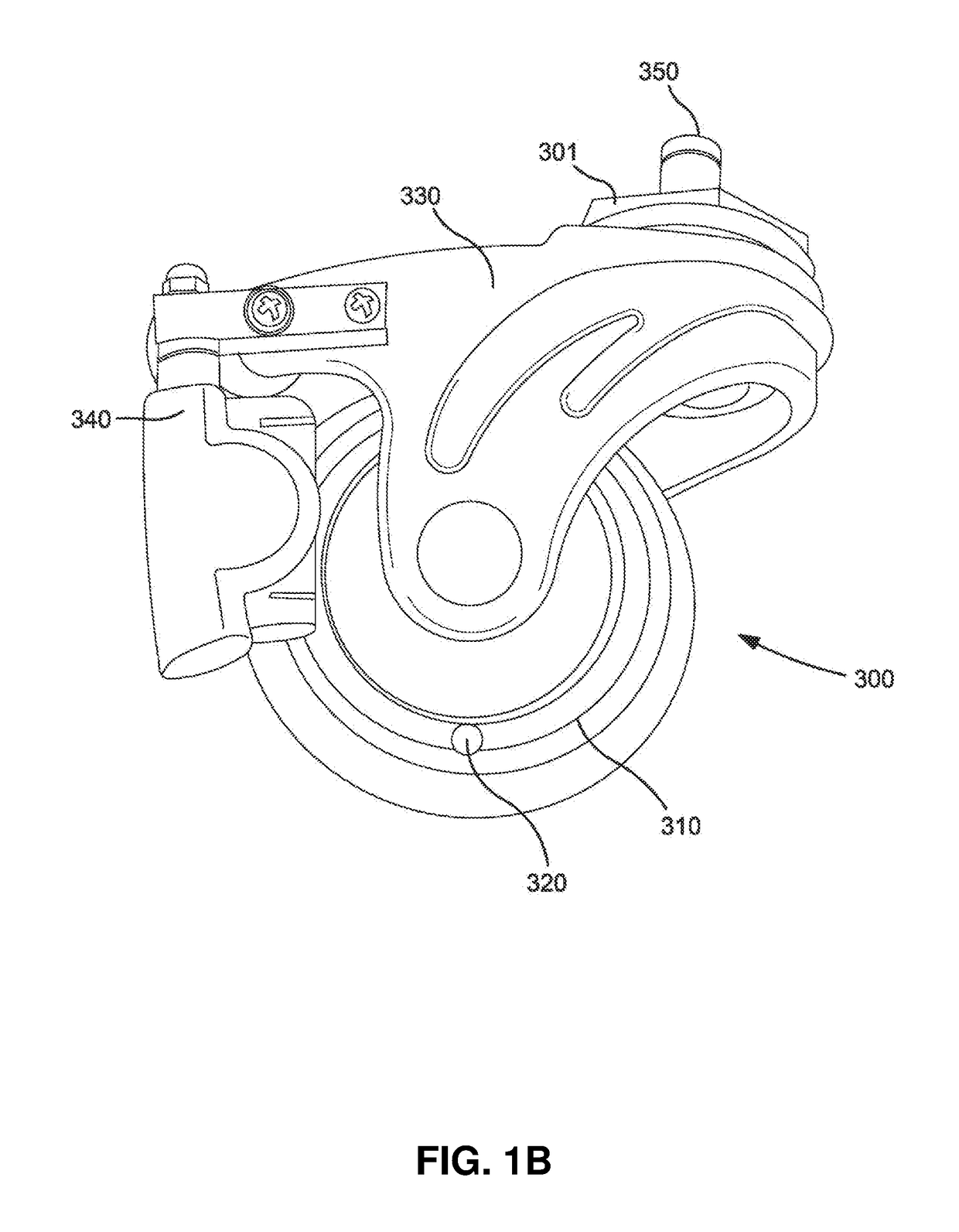Patient Mobility Assessment Device
a patient mobility and assessment technology, applied in the field of patient mobility assessment devices, can solve the problems of not being easily or accidentally removed from the display, and achieve the effects of increasing the amount, intensity and/or frequency of ambulation, facilitating measurement or calculation of one or more patient mobility parameters, and increasing tim
- Summary
- Abstract
- Description
- Claims
- Application Information
AI Technical Summary
Benefits of technology
Problems solved by technology
Method used
Image
Examples
example 1
Assistance Device with Caster Distance Tracker and Receiving Unit
[0045]Referring to FIGS. 1-3 the mobility assistance device 100 may have a caster 300 and a display 220. Optionally the display 220 may be incorporated into a receiving unit 240 as shown in FIGS. 2A and 2B.
[0046]As illustrated in FIGS. 1A and 1B, the caster 300 has a wheel 310, a magnet 320, and a fork 330 that is connected to a sensor 340 having a relay. As the wheel 310 rotates in either direction (indicated by the double sided arrow), the magnet 320 passes the sensor 340, which relays a signal indicating distance traveled to a receiving unit 240 (FIGS. 2A and 2B) that may be connected via protrusion 230 to the mobility assistance device 100 via orifice 120. The caster 300 may also have a pin or protrusion 350 for attaching the caster to the mobility assistance device, such as by positioning with a correspondingly configured orifice positioned in the base. The fork may have a top fork surface 301, bottom fork surface...
example 2
d Systems
[0049]The tracking system illustrated in FIGS. 1A and 1B is one example of an accessory type feature that can be used to convert a mobility assistance device to a patient mobility assessment device, such as by incorporation of the wheel caster 300 with distance tracker. In other examples, the distance tracker may be a GPS-type location-based tracking device that can be positioned in other locations, besides the wheel. In other words, the distance tracker may be connected at other locations than at a wheel caster. For applications where it is desired that the tracking sensor device is discretely used, the sensor may be located in an interior portion 500 of the mobility assistance device, as illustrated by FIG. 4. Of course, any other convenient location may be used, including any interior-facing or exterior facing surface. One example of another possible location is identified as 241 on FIGS. 3A and 4, including a flush-mounted display. As illustrated in FIG. 4, a display 22...
example 3
obility Assessment
[0052]Referring to FIGS. 4 and 5, a receiving unit 240 may be used to functionally obtain information useful for patient mobility assessment. The receiving unit 240 may provide patient mobility parameters 402, such as total distance traveled, total steps, duration of travel, average speed, and / or longest continuous travel time. These parameters 402 may be monitored on a display 220 that is connected to the mobility assistance device (FIG. 4); or on a display 220 that is located at a remote location, such as at a remote work or nurses' station 610 (FIG. 5). A graphical user interface 221 may be provided on the display 220, via communication connection between the receiving unit 240 and workstation computer 240, as indicated by dashed arrow 223. This allows rapid and efficient evaluation of patient ambulation, even for multiple mobility assessment devices that are moving simultaneously. The receiving unit itself may correspond to a computer that is operably connected...
PUM
 Login to View More
Login to View More Abstract
Description
Claims
Application Information
 Login to View More
Login to View More - R&D
- Intellectual Property
- Life Sciences
- Materials
- Tech Scout
- Unparalleled Data Quality
- Higher Quality Content
- 60% Fewer Hallucinations
Browse by: Latest US Patents, China's latest patents, Technical Efficacy Thesaurus, Application Domain, Technology Topic, Popular Technical Reports.
© 2025 PatSnap. All rights reserved.Legal|Privacy policy|Modern Slavery Act Transparency Statement|Sitemap|About US| Contact US: help@patsnap.com



